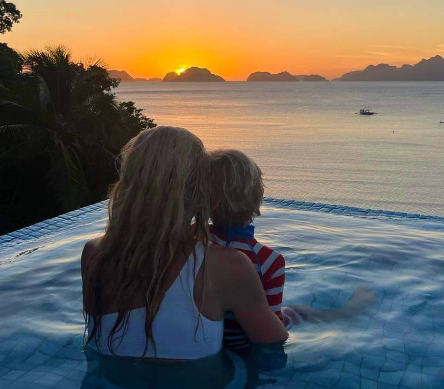Rising to 3,776 meters (12,388 ft), Mount Fuji is Japan’s tallest and most iconic mountain. Mount Fuji is considered one of Japan’s “Three Holy Mountains” along with Mount Tate and Mount Haku, and has been worshipped for centuries. The nearly perfectly symmetrical volcanic cone is world renowned for its beauty and is one of Japan’s most popular landmarks. In this article we talk about Mount Fuji-climbing Guide.
Climbing Mount Fuji is a popular activity and a lifelong goal for many Japanese people. The climbing season is typically early July to early September when the weather is mild and there is less chance of storms or snow. This guide will provide everything you need to know to successfully and safely climb Mount Fuji including facts, preparation, timing, routes, what to pack, costs and more to conquer Japan’s rooftop.
Table of Contents
When to Climb Mount Fuji
As mentioned above, the official climbing season for Mount Fuji is early July to early September. This is when the mountain is most accessible and safe to climb and the Fuji Mountain Radar System is in operation to monitor weather conditions on the mountain.
The peak of the climbing season is during the school holidays from July 20 to August 20 when the mountain can get very crowded, especially at the peak for sunrise. Avoid weekends and Obon week in mid-August if you want a quieter climb. Early July and late August to early September tend to be less busy.
No matter when you climb, you’ll want to carefully check the weather forecast and avoid climbing on rainy or stormy days.
Choosing Your Route
There are four main trails or “routes” up Mount Fuji:
1. Yoshida Trail – The most popular route, well-maintained, not too physically demanding
2. Subashiri Trail – A scenic trail through an evergreen forest
3. Gotemba Trail – The longest trail but with a very gradual slope, often less crowded
4. Fujinomiya Trail – Has the highest starting point, best views of Mount Fuji, more technically challenging
Over 90% of climbers choose the Yoshida Trail that starts at the Fuji Subaru Line 5th Station. The Subashiri, Gotemba and Fujinomiya trails all start around the 1,500 meter (5,000 ft) mark.
While the Yoshida Trail is easiest, keep in mind it will likely be the most crowded. Choose based on your preferred level of challenge versus number of people. Those short on time often opt for the Subashiri Trail.
How Long it Takes to Climb Mount Fuji
It typically takes between 5 to 10 hours to climb Mount Fuji from the base 5th Station to the summit, depending on the route, number of rest breaks and pace. Count at least 3 hours for the descent.
From the lower trailheads it can take 7 to 10 hours just to reach the summit, and double that for a full up and down round trip. Gotemba is the longest trail taking up to 10 hours one way.
No matter which trail you take or your pace, you want to time it so you arrive at the peak in time to watch the sunrise before descending. This means starting your climb in the afternoon, hiking through the night and reaching the top just before dawn.
What to Bring and Wear When Climbing Mount Fuji
Because conditions on Mount Fuji can be very cold and windy with unpredictable weather, proper attire and gear is critical. This includes:
– Clothing – Wind/waterproof jacket and pants, fleece, base layers, gloves, warm hat, hiking pants, hiking socks
– Footwear – Broken-in hiking boots or trail shoes with good traction
– Pack – At least 30 liters with water bladder or bottles, high energy snacks, phone charger
– Headlamp – Critical for hiking at night
– Trekking poles – Strongly recommended
Other essentials include sunscreen, lip balm with SPF, sunglasses, prescription medications, hand warmers, toilet paper, light rain poncho, and cash for mountain huts.
Bring plenty of layers so you can adjust to rapidly changing conditions. Temperatures at the summit often dip below freezing.
A comprehensive packing checklist can be found at the official Yoshida Trail website.
Staying at Mountain Huts
Along all major routes up Mount Fuji you’ll find mountain huts known as “ganso” that offer places to rest, take shelter, buy food and water, and use the bathroom. Most also offer primitive overnight lodging.
The Yoshida Trail has more than a dozen huts along its path. Expect to pay around 5,000 Yen for a few hours rest inside or 8,000 Yen to sleep. Huts typically accommodate 30 to 200 people in close sleeping quarters. Make reservations at least several days in advance if you plan to spend the night.
Note that huts may restrict access during hazardous weather conditions.
Climbing Mount Fuji Solo vs Guided Hike
Climbing solo offers more flexibility and fewer crowds while joining a guided trek provides safety, ease and camaraderie. Guided trips range from small group to large 50+ person tours. Prices start around 10,000 to 15,000 Yen.
Consider your budget, preferences on independence, and skill level when deciding whether to join a tour or venture out on your own. Solo hikers should be capable navigators, have appropriate gear and notify someone of their plans.
Those new to climbing Mount Fuji or who want less stress are advised to book a guide. Kids under age 10 are typically not allowed to climb Fuji.
Getting to the Trailheads
Public transportation can conveniently deliver you to all four Mount Fuji trailheads.
For the Yoshida Trail, take the bus from Shinjuku Station in Tokyo, which takes around 2.5 hours. Or catch the Fuji Kyuko bus from Tokyo, Shizuoka or nearby cities which also takes 2 to 3 hours.
Buses from Shinjuku or Shizuoka can get you to the Subashiri 5th Station in a similar time frame. For Fujinomiya, take the Fujikyu bus from Tokyo station. Buses also run to Gotemba Trailhead from Tokyo or Shin-Fuji Station.
Confirm bus times in advance since they vary by season. Having your own car allows more flexibility to trailhead access roads that may close during poor weather.
Climbing Mount Fuji Travel Costs
Expect to spend around 25,000 to 35,000 Yen per person for transportation, lodging and other climbing costs. That covers round trip bus fare from Tokyo, food/drink and one night at a mountain hut. Add more for multiple nights on the trail, parking fees if driving, equipment rentals or a guided tour.
Buy climbing stick stamps at each station and summit torii gate for 500 to 800 yen each as a commemorative souvenir. Carry small bills and coins since most kiosks only accept cash.
Apps, Maps and Resources
Download offline maps of Mount Fuji trails before departing since data connectivity is highly limited on the mountain. The goalRoute Fuji app provides detailed topographic trail maps that are handy for navigation.
Use the Climbing Season Mount Fuji website and Japan Meteorological Agency to stay updated on weather and trail conditions. The Official Mt. Fuji Website also provides essential info.
Travel insurance is highly recommended in case plans must change due to weather or other circumstances.
Conquering the Summit
Reaching the summit of Mount Fuji just in time to watch the sun peek over the horizon, casting its rays over Japan in a fiery dawn, will be a memory you cherish for a lifetime.
With proper planning, gear and preparation conquering Mount Fuji is an achievable goal for most reasonably fit hikers. Just be sure to travel safely and responsibly when climbing Japan’s iconic peak.
Now that you know what to expect, you’re ready to start planning your own Mount Fuji adventure! Let us know if you have any other questions as you prepare to take on Japan’s highest mountain. I sincerely hope you find this “Mount Fuji- climbing Guide” article helps you.

Sophie Turner is the adventure travel writer behind AdventureTravelFam.com. With over 10 years of experience in travel writing and a Master’s degree in Tourism Management, Sophie shares her expertise in exploring unique destinations and providing family-friendly travel tips. Follow her adventures on Instagram @adventure_travelfamily.





